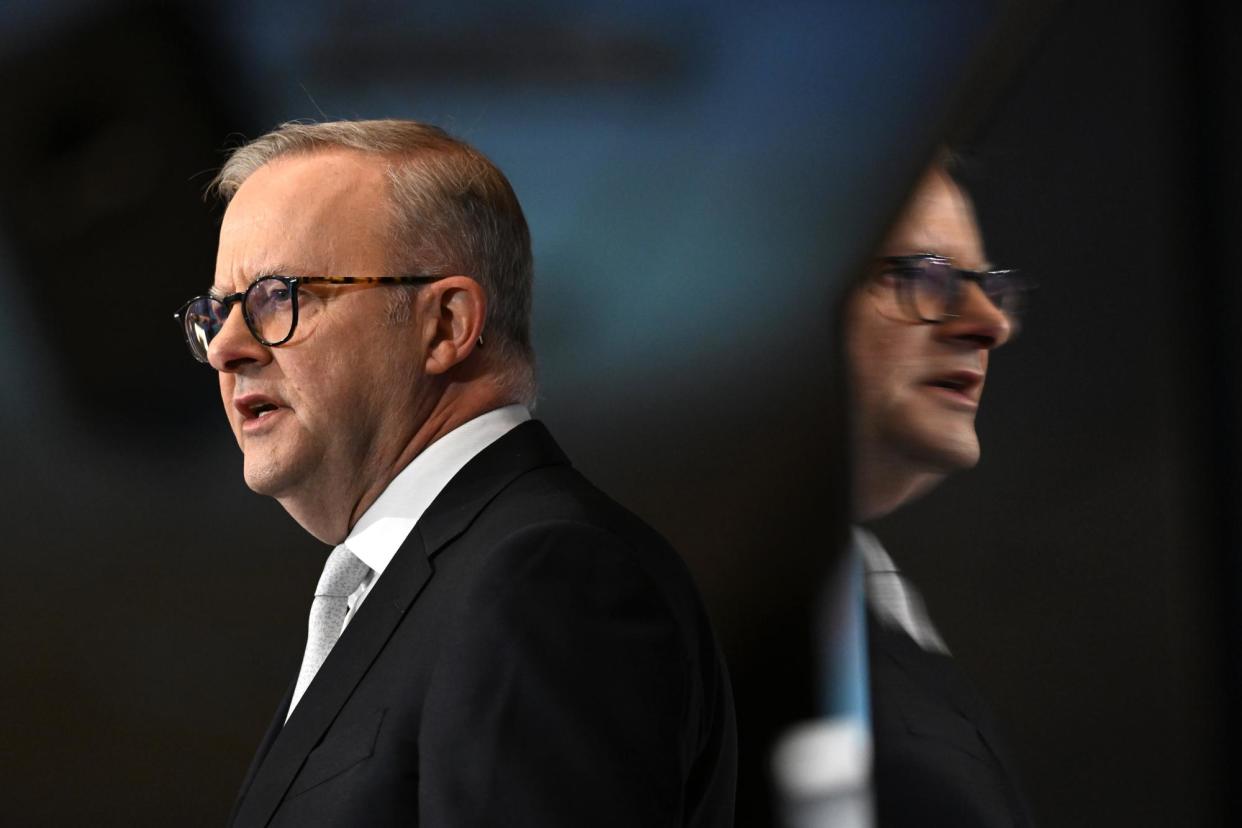Labor’s interventionist industry policy aims big. But how can Australia compete with the US and China?

Edison Zhou, the head of local sales for solar giant Trina, was slightly taken aback when asked at a recent briefing in Sydney whether his firm might shift any of its panel manufacturing to Australia.
After all, wasn’t Australia among the Chinese company’s top markets in the Asia-Pacific, on a par with Japan with a total demand heading towards 6 gigawatts a year?
Trina had plants outside China in the US, the United Arab Emirates and south-east Asia but just 12 employees in Australia. With an annual capacity of 95GW – or more than Australia’s total fleet of generators – perhaps there was scope to bring some here?
Zhou said his bosses in eastern China might “study such a possibility”, implying they haven’t done so yet. Compared with markets such as China’s – now nudging 220GW a year – Australia is “not quite big to us”, he told Guardian Australia.
Trina’s reticence underscores the challenges facing the government’s Future Made in Australia policy. Unveiled this week by the prime minister, Anthony Albanese, it aims to “seize the opportunities of the next decade, for our nation to generate the energy, skills, jobs, technology and investment that will power our future prosperity”.
The size of the programs is gaining heft – including a $15bn National Reconstruction Fund, $4bn for critical minerals and $2bn for green hydrogen – with more likely in next month’s federal budget.
But should Australia bother competing in industries such as solar when Chinese firms have such gargantuan scale? And, as for joining what the Australian Financial Review dismissed as a “worldwide race to the bottom”, how can Canberra ever stump up more than a fraction of the US’s $600bn Inflation Reduction Act (IRA) and equivalents in the European Union and elsewhere?
The answers, though, aren’t as simple as “let the market decide”.
To the government’s credit, its interventionist efforts – including laying the groundwork for a shadow carbon price on energy – mostly seek to promote decarbonisation. Tackling the climate crisis, arguably the biggest market failure in history, wasn’t made easier when the Abbott government culled the carbon price.
We also ignore economics when it comes to, say, building nuclear submarines in Australia. National security concerns about China presumably trump market concerns.
And, as it happens, the design and odds of success for industry policy hinge on how we think about China.
Renate Egan, the executive director of the Australian Centre for Advanced Photovoltaics and an author of a recent report on solar’s prospects in the country, said “the natural outcome” would be to work with Chinese companies.
Rather than recreate the whole supply chain, Australia had a relative edge in refining silicon dug up locally and assembling the final modules from imported components. Chinese firms may see it in their interests to diversify risks.
Australia’s annual solar market could reach 15GW or more, potentially large enough to entice Chinese investment especially if governments set local content requirements, Egan said.
If, however, the policy aim was to compete with China or prepare for a future breakdown of relations, then Australia “had a comparative advantage with the rest of the world” on much more of the solar supply chain, she said.
Albanese and his ministers have so far shed little light on how the largesse will be divvied up. Mariana Mazzucato, the founding director of the Institute for Innovation and Public Purpose at the University College London, might provide some of the illumination.
Dubbed the treasurer Jim Chalmers’ “favourite economist” by the AFR, Mazzucato recently held a week of meetings in Australia, including with senior heads from departments such as finance and industry, and a commissioner from the Productivity Commission. (Chalmers himself described her as “influential” in a 6,000-word essay published in the Monthly last year.)
Grateful to @MazzucatoM for the opportunity to catch up again, to talk about a more effective relationship between the public and private sectors to boost investment in the digital economy, net zero transformation, and future prosperity. #auspol #ausecon pic.twitter.com/M5dJ1JzgCI
— Jim Chalmers MP (@JEChalmers) March 11, 2024
Mazzucato is a strong backer of government intervention to “catalyse” change, highlighting the “mission economy” derived from America’s Moonshot program. (The government dubbing its solar scheme “Sunshot” hints at a familiarity with her work.)
Cameraphones, foil blankets and baby formula were among spin-offs from the push to send astronauts to the moon, she notes. A reminder that not all nice things come from canny entrepreneurs tooling around in garages.
Policymakers should design their program based on an “objective orientation”, rather than fixing a market failure, Mazzucato told Guardian Australia last month from an airport lounge as she prepared to jet back to Europe.
The key is to ensure companies receiving support are encouraged if not required to make investments on their own so innovations take on lives of their own.
“If you’re just giving out subsidies and guarantees, in a problem-oriented way, that might actually just increase costs for companies and not catalyse that investment,” she said.
Mazzucato also drew a distinction between the IRA and the US$280bn (A$430bn) Chips and Science Act. (The latter scheme also has a national security element, with the US aiming to reduce reliance on semiconductors from Taiwan should it get invaded by China.)
Apart from the relatively standard sharing of risks and rewards, transparency and accountability, the Chips Act imposed other conditions. Recipients had to commit to reinvesting profits not just using proceeds on share buybacks, as has been the case with similar schemes in the past. Energy efficiency and working conditions also had to be improved, she said.
And there’s a warning the Albanese government and others should heed.
“Government programs should be focusing on transformational change, not just giving billionaires and their industries a subsidy,” Mazzucato said. “That would be stupid.”


